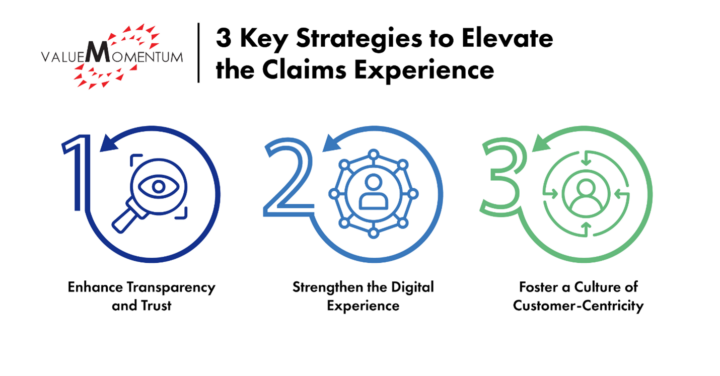Claims is typically the most important customer touchpoint within the insurance life cycle; it’s the moment when insurers can live up to the promise that they make to their policyholders: to cover them in the event of a loss. A frustrating claims experience can sour a customer’s perception of their insurer.
Besides purchasing a policy and paying their premiums, filing a claim may be the only time when a policyholder interacts directly with their insurer. Claims are often the most significant interaction policyholders have with their insurers, making it a make-or-break moment for customer satisfaction — and the insurer’s brand.
Given its clear importance to the success or failure of customer relationships, why does the claims experience have such a bad reputation? This blog post explores where most insurers’ claims experiences are lacking and offers suggestions for how to make it better for everyone involved.
Why Is Improving the Claims Experience Crucial?
In today’s competitive landscape, providing exceptional customer service is critical for P&C claims organizations. The National Association of Insurance Commissioners (NAIC) revealed that the overwhelming majority of complaints filed against insurers by consumers in 2023 — 70.9% — involved claims. The top issue mentioned in those complaints was delays in claims handling.
The same NAIC report revealed that prompt payment complaints increased a steep 52.3% possibly due to the tough economic climate and changing regulations insurers are also navigating. Personal auto and homeowners lines had the highest and second highest percentage of complaints, respectively, showing that P&C insurers have a major opportunity to attract and retain customers by investing in providing a better claims experience.
These delays and inefficiencies not only damage customer perception, but they also impact customer retention. In a time when insurers are grappling with economic challenges and evolving regulations, insurers have a massive opportunity to differentiate themselves by enhancing their claims process. Addressing this issue directly impacts an insurer’s bottom line since acquiring new customers is far more costly than retaining existing ones.
Three Key Strategies to Elevate the Claims Experience
Improving the insurance claims experience requires insurers to focus on three main areas of investment: providing transparency and empathy throughout the entire claim’s life cycle, offering more digital payment options to accelerate the payout process, and striking a balance between digital and human interactions.

1. Enhance Transparency and Build Trust
A frequent pain point for policyholders is a lack of clear and transparent communication during the claims process. Customers often encounter ambiguous settlement timelines, unclear procedures, or unexplained claim denials, all of which erode trust.
Legacy technology, with its siloed systems, further complicates the process, making it difficult for customers to track their claims and gain visibility into where in the process their claim is in an efficient way.
The claims handling process involves collecting data from multiple internal systems as well as data received from and sent to various external vendors. When insurers are modernizing their systems, they need to consider how they can make the claims life cycle more transparent throughout.
Policyholders should receive real-time status updates and know how and where to ask their claims representative any questions they might have. While automation is essential, ensuring that human support is available when needed — especially for complex claims — can make a significant difference. Offering empathy and reassurance at critical moments builds trust.
2. Strengthen the Digital Experience
The days of a one-size-fits-all approach are over. In today’s fast-paced environment, customers expect swift, seamless, and personalized service based on their unique needs and preferences, and claims are no different. From first notice of loss (FNOL) to final payout, insurers should leverage digital platforms to streamline the claims process and reduce friction. In a digital world, consumers expect the ability to access their claims through their channel or device of choice, anywhere they want.
Beyond FNOL, payment options are a critical aspect of the customer experience. Traditional check payments can take days or even weeks, causing unnecessary delays. As younger generations such as Millennials and Gen Z start making up an increasing portion of the customer base, offering digital payment options like direct deposit, Venmo, or Zelle is becoming a key differentiator. The ability to disburse payments quickly and through the customer’s preferred platform enhances satisfaction and loyalty.
Offering a digital claims experience allows claims organizations to meet customers’ expectations by streamlining processes and reducing delays. One way carriers are able to rise to this challenge is by leveraging AI-driven tools to automate routine tasks like document verification, damage assessment, and claims status updates to speed up the claims process and reduce human error.
3. Foster a Culture of Customer-Centricity
While technology and automation can streamline many aspects of claims handling, nothing can replace the human element in moments of distress. Insurance claims often occur in times of crisis, such as after a car accident or natural disaster. Showing empathy and understanding during these times can make all the difference in a customer’s perception of their insurer.
While consumers are embracing digital technologies and often favor automation tools to expedite processes, many still like to speak to a person about their claim concerns. Being there for policyholders during a critical time and being responsive to what they need goes a long way in strengthening customer loyalty and retention.
Policyholders should have the option to engage with insurers in the way that they prefer rather than being forced to deal with an automated phone system or rely on a human to make a simple policy status inquiry. Customers should have the flexibility to choose between digital tools versus a human touchpoint when they’re dealing with more delicate questions about their claims. Their experiences should be a balance between digital and human interactions.
Engagement with customers dealing with a loss should be imbued with empathy. Not only is this the appropriate way to support people dealing with a loss, but companies that take a
Better Claims Experience Builds Competitive Advantage
The claims experience is more than a functional transaction; it’s a defining moment that shapes the future of the insurer-customer relationship. For insurers willing to invest in transforming this critical touchpoint, the rewards are clear: improved customer satisfaction, increased loyalty, and a distinct competitive advantage in a crowded marketplace.
By focusing on transparency; digital transformation; and a customer-first culture that is filled with personalization, empathy, and a human touch, insurers can create a claims experience that not only meets but exceeds customer expectations. This investment will not only benefit the insurer’s bottom line but also reinforce its reputation as a company that truly cares about its policyholders.
Learn more about how P&C insurers are improving their claims experience in our case study, U.S. Midwest Insurer Drives Efficiency and Customer Experience With Guidewire ClaimCenter.
